I have created a lower triangular correlation heatmap using Seaborn that I loved. Now trying to create the same using Plotly. Unfortunately, not being able to fine tune it like I did with Seaborn.
names = ['U', 'V', 'W', 'X', 'Y', 'Z']
r = pd.DataFrame(index = names, columns = names)
r['U'] = np.array([1.0, 0.53, 0.26, 0.63, 0.52, 0.65] )
r['V'] = np.array([0.53, 1.0, -0.17, 0.83, 1, 0.85])
r['W'] = np.array([0.26, -0.17, 1.0, 0.04, -0.15, 0.09])
r['X'] = np.array([0.63, 0.83, 0.04, 1, 0.83, 0.80])
r['Y'] = np.array([0.52, 1, -0.15, 0.83, 1, 0.86])
r['Z'] = np.array([0.65, 0.85, 0.09, 0.80, 0.86, 1.0])
print(r)
import seaborn as sns
# sns.set_theme(style="white")
mask = np.triu(np.ones_like(r, dtype=bool))
# Set up the matplotlib figure
f, ax = plt.subplots(figsize=(11, 9))
# Generate a custom diverging colormap
cmap = sns.diverging_palette(230, 20, n=256, as_cmap=True)
# Draw the heatmap with the mask and correct aspect ratio
sns.heatmap(r,
mask=mask,
cmap=cmap,
vmax=1,
vmin = -.25,
center=0,
square=True,
linewidths=.5,
annot = True,
fmt='.2f',
annot_kws={'size': 10},
cbar_kws={"shrink": .75})
plt.title('Asset Correlation Matrix')
plt.tight_layout()
ax.tick_params(axis = 'x', labelsize = 8)
ax.set_ylim(len(corr)+1, -1)
# plt.savefig('corrTax.png', dpi = 600)
plt.show()
I am trying to create this using Plotly. Here is what I have able to do so far.
mask = np.triu(np.ones_like(r, dtype=bool))
rLT = r.mask(mask)
heat = go.Heatmap(
z = rLT,
x = rLT.columns.values,
y = rLT.columns.values,
zmin = - 0.25, # Sets the lower bound of the color domain
zmax = 1,
xgap = 1, # Sets the horizontal gap (in pixels) between bricks
ygap = 1,
colorscale = 'RdBu'
)
title = 'Asset Correlation Matrix'
layout = go.Layout(
title_text=title,
title_x=0.5,
width=600,
height=600,
xaxis_showgrid=False,
yaxis_showgrid=False,
yaxis_autorange='reversed'
)
fig=go.Figure(data=[heat], layout=layout)
fig.show()
- Seaborn colormap that I was create, I want to create something similar in Plotly. How can I do that?
- I was able to control the axis label sizes.
- Would love to put values into each box (
annotoption in seaborn), with rounding option





